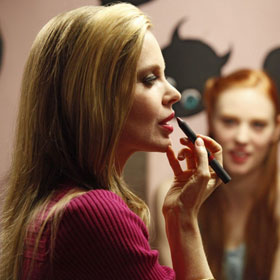True Blood – Season Five

4/5
The phrase "guilty pleasure" is probably overused, and in the world of television, it can be loosely applied to nearly everything. From an early age we learn that while watching TV can be fun and entertaining, it can also be dangerously addictive and perhaps harmful to our brains, bodies and collective moral character. Guilt is the psychological mechanism in place to keep us from indulging in too much pleasure, lest we turn into mindless, spindless slobs capable of pursuing nothing but the repeated satiation of our basest drives.
HBO's vampire drama True Blood, now in its fifth season, has since its beginning tried to pry away the association of guilt with pleasure in a way that is quite ingenious for a TV show. First off, True Blood, created by Alan Ball, thematized the very problem of guilt-inducing entertainment: how to convince a public that its hedonistic desires and prudish attachment to self-regulating need not be viewed as incompatible forces but rather as discrete ingredients in an achievable harmony, like a classical pianist playing along with a heavy metal rocker or, say, humans living side by side with vampires. You'll remember that the idealized universe of True Blood begins with an invention — a brand of beverage that can sustain vampires' essential bloodlust, thereby minimizing their danger to humans and eliminating cause for ostracization — and proceeds as a series of conflicts born of the effort to keep that idealized, harmonious world intact.
The plot not to secure progress but to prevent a retroactive, reactionary blow to progress ought to strike a chord with any political minority who has been awarded legal protection in the face of popular disapproval, but notice that True Blood long ago abandoned allegory as a means for propelling a narrative. In its sophomoric seasons, the show demonstrated little effort to compromise on its plan to add as many mythical creatures as possible, starting next with "shifters" — a species of creature conspicuously more diverse than a werewolf, to which obvious comparisons can be made. Tolerance, on behalf of both the character humans and on the audience, for one kind of dangerous freak inevitably led to a similar demand for tolerance of another, and once there's a third category of being, we know there is no stopping the intrusion of a fourth, fifth, sixth, and so on. In other words, the plot of True Blood has been the proliferation of various strands of identity out of an initial two: human and non-human. It's a proliferation that begets other proliferations, as the conflicts between various species provide ample ground for new shifts in power and new characters to be added.
If there's one quality in True Blood that will save it from the quagmire of too many characters and too diffuse a focus, it would have to be its playful sense of polysexuality. In Season 5's premiere episode this was particularly striking, with enough references to and depictions of alternative sexual situations (homosexuality, bisexuality, infidelity, incest, miscegenation, etc.) to choke on. But the potential for derailment is still palpable, given the seemingly exponential growth rate at which the character list has grown. True Blood's promsicuity may get the better of it.
Emblematically, in one of the Season 5 premiere's several throwbacks to Season 1, vampire Pam, played by Kristin Bauer van Straten, takes a swig of Tru Blood after pulling herself out of the grave plot she slept in. The grimace of disgust that crosses Pam's face is all the reminder we need that Tru Blood is a far cry from the "real thing," that part of what makes something pleasurable has something to do with violence, with sex, and with its being forbidden. As True Blood continues to expand our receptivity to various kinds of everything, it will have to fight harder to reign us back in with something that makes us understand how good we have it. Or else we'll have 100% pleasure and no guilt — and that, if you ask me, doesn't sound very appetizing.
RELATED ARTICLES
Get the most-revealing celebrity conversations with the uInterview podcast!







Leave a comment